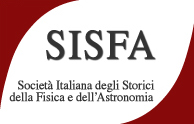Speaker
Description
In this presentation, I will review Giuliano Romano's research activities within the academic realm at the University of Padua.
Giuliano Romano graduated in Mathematics from the University of Padua in 1950 with a thesis entitled "Sui problemi statistici ed evolutivi delle stelle doppie (On the statistical and evolutionary problems of binary stars)". Immediately after, he began collaborating with the Padua Astronomical Observatory and the Asiago Astrophysical Observatory, which was equipped with a 1.22m telescope. He later conducted research campaigns using the new telescopes at Asiago, including the wide-field Schmidt telescope and the 1.82m telescope.
At the University, he became a lecturer in Astrophysics at the Institute of Astronomy, then appointed as an Associate Professor of Cosmology, and became a Professor of the History of Astronomy.
His studies, conducted through astrophotographic observations, allowed him to discover hundreds of variable stars. The variable star he discovered in the spiral galaxy M33, known as GR290, is still studied and referred to as Romano's Star. In 1952, he discovered the binary star system EE Cephei, which has been the subject of numerous modern observational surveys worldwide. He was the first Italian to discover an extragalactic supernova in the galaxy M84 on 1957, and later replicated the discovery of another supernova on 1961, in the galaxy NGC4564. The new telescopes at Asiago allowed him to expand his studies on active galactic nuclei such as BL Lac objects, the variability of Quasi Stellar Objects (Quasars), discover new galaxies, and study the variability of extragalactic objects.

